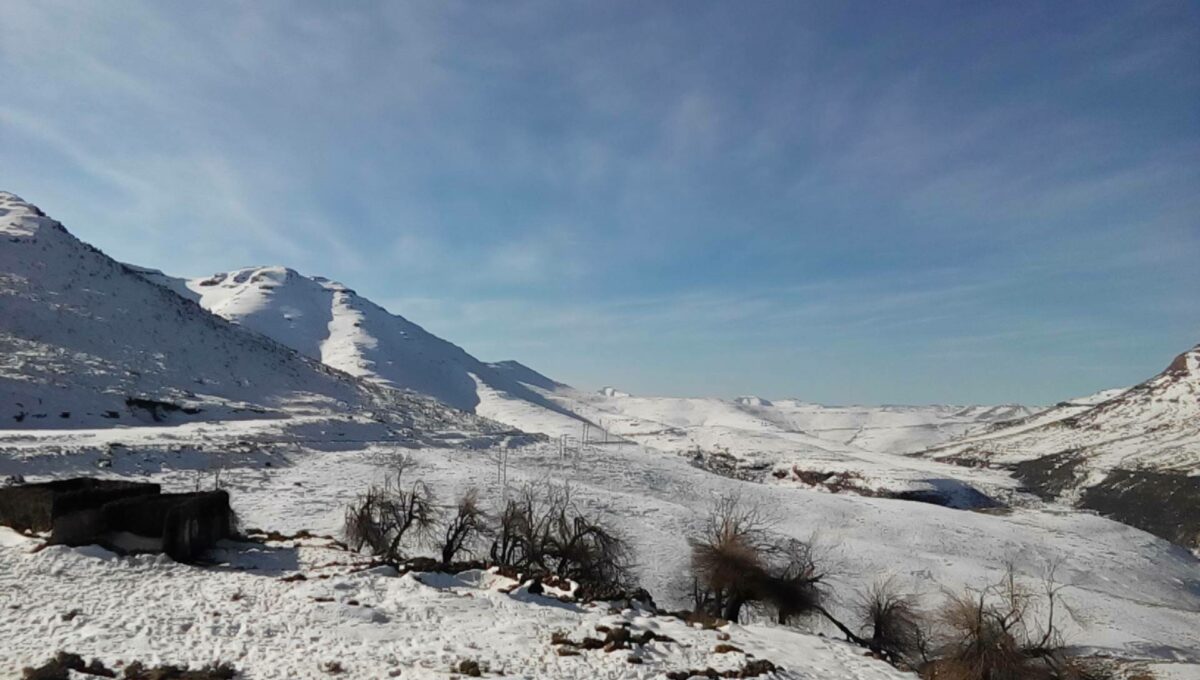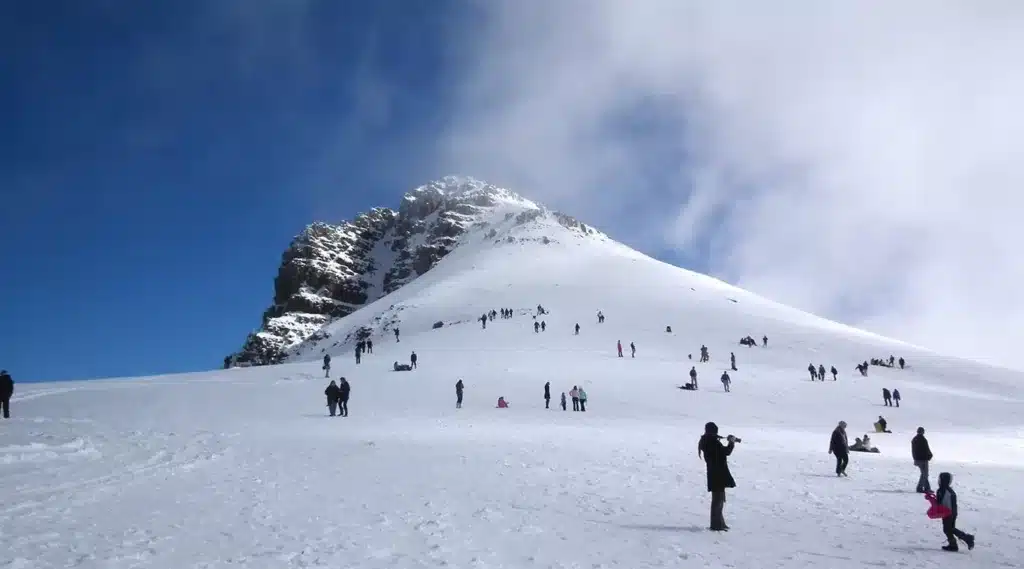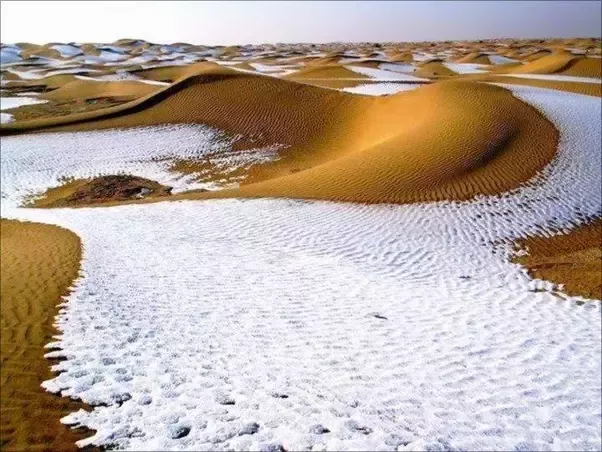Snowfall occurs in several African countries, with this article examines 8 African countries where snow. Southern, Nothern, Central and Eastern African countries are the beneficiaries of snowfall. nations during dry seasons. Snow covers Mount Kilimanjaro, Mount Kenya, Atlas and the Rwenzori Mountains. Despite the common perception of Africa as always warm, it’s important to note that snowfall does happen in various regions, although many African countries generally have warm climates.
So does it Snow in Africa?
Snow is indeed a phenomenon in Africa. Despite being the hottest continent with extensive drylands and deserts, some African countries have snow. Particularly the northern regions, witness consistent snowfall. These areas tend to have lower temperatures, increased precipitation, and higher elevations, creating snowing conditions. The peaks of tall mountains attract clouds as warm, moist air ascends, leading to snow cover. Certain high-altitude mountains across Africa can maintain snow throughout the year due to these conditions. Although regions farther from the equator generally experience cooler temperatures during specific months, snowfall remains a unique occurrence in select areas of the continent.
Why Snowing in Africa is Different?
Africa snowing is a unique experience compared to other continents. This is because of the rarity of snowfall across most of its countries. The coldest average temperatures in African nations typically range from 16-18°C, a considerable difference from the 0°C or below required for snow to occur.
The weather patterns in Africa mirror the continent’s complexity. Each country and region has its unique factors shaping its climate. Much of the continent, spanning between 35°5 to 37°N latitude, lies within the tropics.
The pervasive heat along the tropics results in predominantly hot climates across most African regions. However, certain northern and southern parts experience cooler conditions conducive to snowfall.
The equator acts as a dividing line, creating distinct climate zones on either side of the continent. In Southern Africa, high-pressure bands over the land weaken during peak sun exposure. While central and northern Africa witness intense heat due to the formation of quasi-permanent subtropical high-pressure systems.
Do African Countries Have a Winter Season?
Across most African nations, the primary seasons revolve around the dry season, characterized as either windy or harmattan, and the rainy season. Sometimes, the rainy season coincides with the onset of heat.
However, specific African countries do experience a distinct winter season in their climate cycle. Winter typically spans from June to August in the southern regions of Africa. Night and morning temperatures increase in countries like Namibia, South Africa, Lesotho, Swaziland, and Zimbabwe, occasionally leading to snowfall. Even in northern Africa, countries like Morocco and Algeria witness snowfall towards the year’s end.
8 African Countries that Snow
1. Lesotho

Lesotho is among the unique countries that experience snow. The country’s climate is frigid because its lowest point is 1400 metres above sea level, and its highest point is 3,482 metres above sea level. Maseru, the capital city, experiences snow year-round, which can accumulate to about 13 millimetres.
Winter in Lesotho is the coldest time of the year, starting from June to August. During this time, the temperature flops, and the highlands experience snowfall. Amid winter, lows can reach 0 °C, and highs can reach 16/19 °C.
Snowfall occurs annually in the Southern African Kingdom of Lesotho, typically between May and August.
The Afri-Ski Resort in the Botha Bothe district, situated at an altitude of approximately 3000 meters above sea level, offers skiing opportunities during this time. Beyond the resort, the entire mountainous country experiences snowfall during this period. Images below depict the snow-covered Bushman Pass and Mohale Dam wall in the capital district of Maseru, as well as the snowfall scene at AfriSki Resort.
2. South Africa Among 8 African Countries that Snow
Not all regions in South Africa experience snow due to their diverse environment. But regions like Drakensberg and Cape have extremely low temperature that results in snow. Cold regions experience a median high of 12.3°C to as low as 4.7°C. The temperature can flop to 4°C the following month with an average of 6 millimetres of snow.
The Western Cape and Northern Cape experience the most snow, with at least five snow days annually, reaching up to 30 millimetres. June marks the start of winter in the parts where it snows, and August usually marks the end of it.
3. Namibia
Namibia, too, is among the 8 African countries that witness snowfall on occasion, albeit in small amounts. When it does, it adds a touch of coolness to the atmosphere, enhancing the allure of exploration. Namibia is characterized by two seasons: a lengthy cool, dry season and a short, hot, wet season. The warmth of the latter period precludes the occurrence of snow.
4. Uganda (Rwenzori mountains)
The Rwenzori Mountain, situated on the border of Uganda, experiences temperatures ranging from 20°C to below -5°C, fostering the formation of glaciers, snow, and ice. The mountain also encounters frequent rainfall, contributing to its alpine-like climate.
5. Ethiopia (Simien mountains)
It might surprise you, but Ethiopia is indeed among these countries. Snowfall occurs in specific regions of Ethiopia, particularly in the northern mountains where several feet of snow accumulate annually. It’s quite remarkable, considering Ethiopia’s proximity to the equator!
The country boasts numerous high mountains that receive this annual snow dusting, including Ras Dashen in the Simien Mountains National Park within the Amhara Region of North Gondar, reaching an elevation of 4,550 meters.
6. Kenya (Mount Kenya)
From March to December, Mount Kenya receives substantial snowfall and rainfall due to its elevated position, resulting in notably cold temperatures. When precipitation isn’t present, the mountain experiences consistent windy conditions. As a consequence of these weather patterns, Kenya is among the eleven African nations known to receive snow.
7. Morocco

Morocco is among the 8 African countries that snow. Situated near Spain, a European nation, Morocco is bordered by the Mediterranean Sea and the Atlantic Ocean. This diversity extends to its temperatures, featuring highlands, semi-arid, Mediterranean, and sub-Mediterranean zones.
Temperatures in Morocco vary across these zones: the Mediterranean zone ranges from 29°C to 32°C, the sub-Mediterranean from 27°C to 40°C, the continental from 32°C to 36°C, and the Alpine zone maintains a high temperature of 30°C.
Winter, spanning from December to February, showcases distinct temperature ranges across zones, plummeting as low as -5°C to -8°C. During this season, snowfall is common in various regions of the country, especially in the northern and central zones.
8. Algeria
At specific instances, Algeria, often known as the “gateway to the desert,” experienced snowfall in February 1979 and on December 19, 2016. This town, with a population of around 35,000, is located between the Atlas Mountains and the northern Sahara.
Does it Ever Snow During Christmas in Africa?
Of course, you will find regions where snow falls during Christmas in Africa. Only it will be at a specific point, like Mount Kenya and Mount Kilimanjaro, because snow covers the tip of these mountains year-round.
Other regions in Africa where it snows during Christmas are the Northern parts like Morocco and Algeria. Although this is a rare occurrence, it does happen.
Bottom Line
Winter does occur in Africa, though not in many regions. Snowfall occurs, but owning a snow shovel isn’t typically essential because the snow tends to stay for a brief period. However, it offers opportunities for snowboarding and crafting snowballs for playful moments. Packing a sweater and boots becomes necessary to ward off the cold during this fleeting season.
Africa remains a captivating continent to explore, and its winter season adds an extra layer of wonder. The unique snowfall patterns and the distinctiveness of its wintry landscapes, differing from those in Europe, provide a fresh and unique experience.



